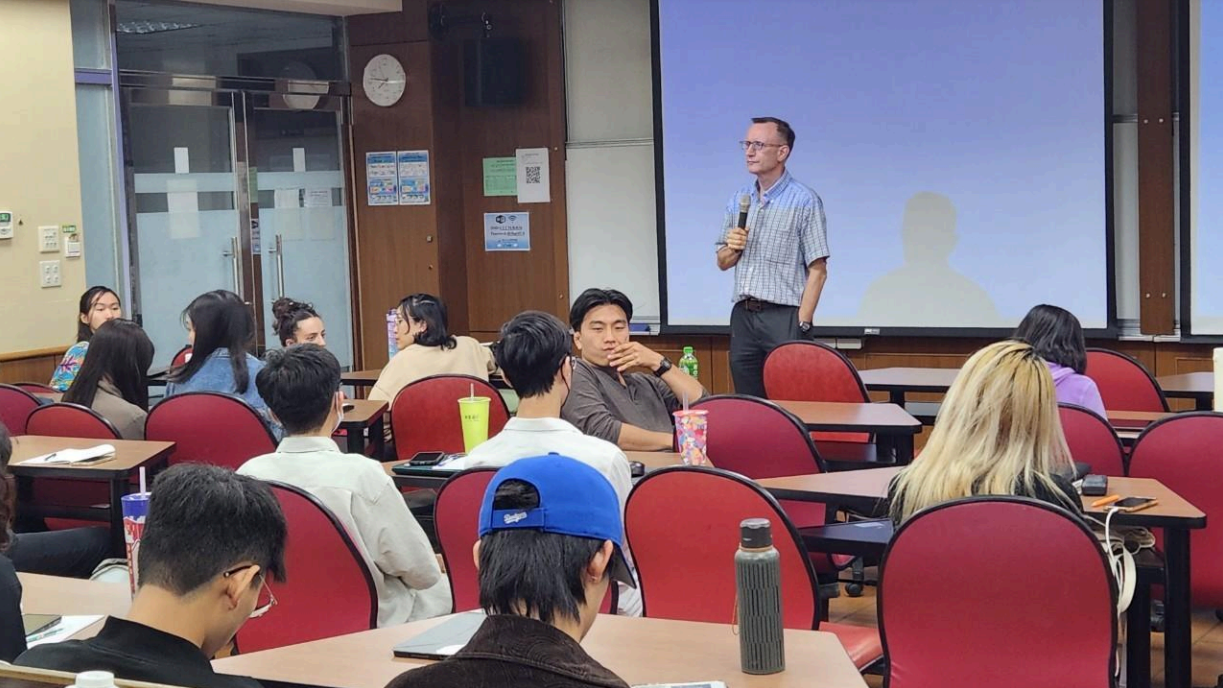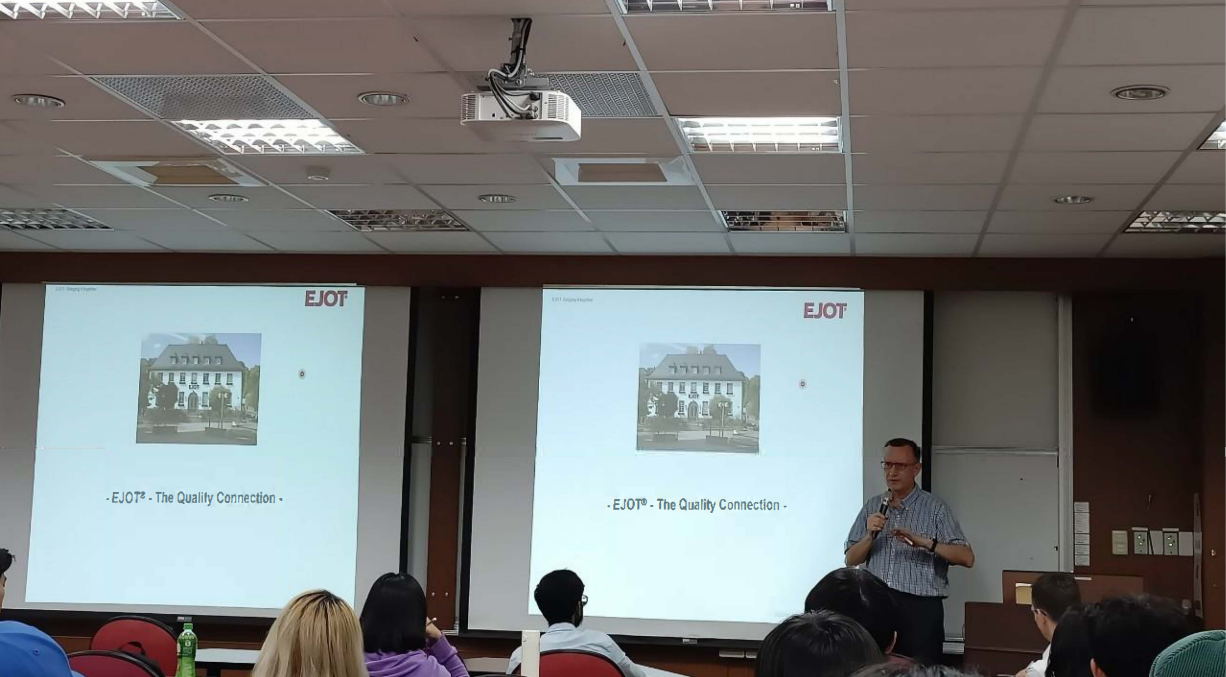《112-2 GHRM591》Intro EJOT/Subsidiary Set Up/SCM EJOT TW (Lean Mgt.): “Disruption free/Flow/Rhythm/Pull”
Written by Mandy Lin and DARYL ANDRIAN
On 21/03/2024, Ingo Thiel from EJOT Taiwan came to a combination class of GHRM and IBBA’s Production and Operations Management course by Professor Timo Eccarius to give a guest lecture. Ingo Thiel is the director of supply chain management in Asia and the brand manager of EJOT Taiwan.
The lecture started by introducing EJOT’s history which started as a screw production factory in the fastening industry. EJOT proceeded to become the leading screw manufacturing factory in the German Federation. As time went on EJOT added new production sites in Mexico and China, maintaining their status as one of the leading screw production companies in the world. Currently EJOT has 4581 employees in the whole world. EJOT is considered as a “hidden champion” in some of its niche products. EJOT highlighted their patented products which currently stand at 2127 patents. EJOT is the biggest screw manufacturer in Europe by producing 51 million screws per day
EJOT opened the Taiwan branch (in Kaohsiung) in September 2007, becoming the hub for other EJOT subsidiaries in Asia markets in November 2008 and starting their full operation. They refocused the supply chain by doing quality control and allocation of goods at the point of purchase, which Ingo strongly emphasized the importance of quality. Thus, EJOT achieved a significant 92% reduction of quality claim rate within a year. When you’re managing a supply chain you need to solve any possible problem as early as possible. At first, EJOT’s products received a high level of rejection which is 6% out of the 0.8% target, but within a short time the rejections got lower and lower which averaged around 0.5%. Ingo highlights the importance of having buffer stocks in managing the demand and supply to provide flexibility in the market.
Continuing the lecture in supply chain, Ingo shared the basic principles of supply chain management in EJOT which are disturbance free, flow, rhythm, and pull. He mentioned that everything needs to be free from disturbance, especially in the production flow. All divisions need to keep moving to produce the best result. In order to achieve this, it requires the company to possess a certain rhythm to avoid randomness in production quantity through a regular checking mechanism. Furthermore, Ingo also stated the significance of the pull system in modern society instead of the push system.
From the practical implementation perspective, disturbance free is implemented by avoiding mistakes such as minimizing single source, which EJOT has put a lot of effort into keeping quality control at a high level. Implementing flow and rhythm is done by constantly moving internal and external supply chains, it is done by scheduling, producing in lower volume but higher order frequency. This will help to create better inbound and outbound rhythm to suppliers. The last principle, pull is implemented by reducing stocks in the warehouse and continuing by replenishing it, but at the same time we need to make sure that the shipment comes in time rather than too early or late.
Applying the principles is not easy, there are some challenges faced in implementing the principles. One of the main problems is the difference in departments’ targets. Some departments focus on making as much as possible meanwhile the other departments focus on the production process and minimizing risk which sometimes differs to each other than bring some challenges to mediate both targets.
To conclude the session, Ingo restated the importance of the four principles in managing the supply chain. Lastly, the session continued with interesting questions raised by students. Because a smooth flow is the most essential process of doing production and operations management, we need to ensure that no groups work too fast or slow, because even quick work by a group can slow down others’ processes. This is an endless struggle in handling production and operations management, we need to constantly change or adapt the processes so we can find the perfect flow that can operate smoothly. Moreover, students also curious about 3D printing, particularly metal 3D printing, could have what applications or impacts for the company. Ingo mentioned that it could primarily be used for prototyping purposes. However, Ingo also pointed out that, like CNC machining, 3D printing has significantly lower production capacity, making it unable to replace their current manufacturing methods entirely.






